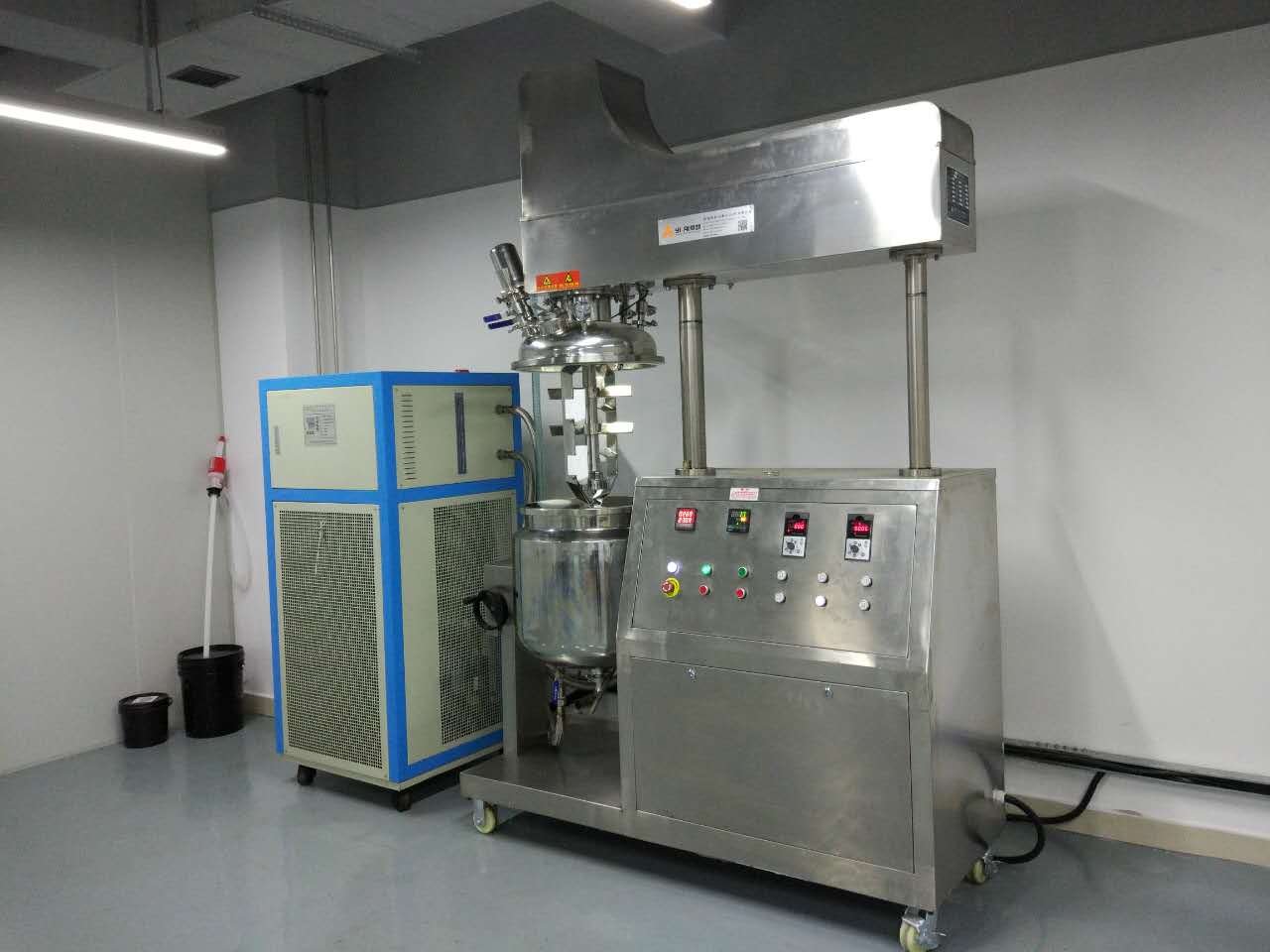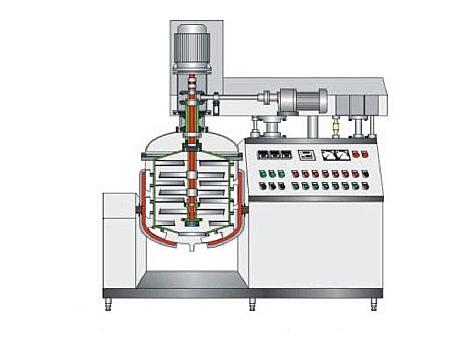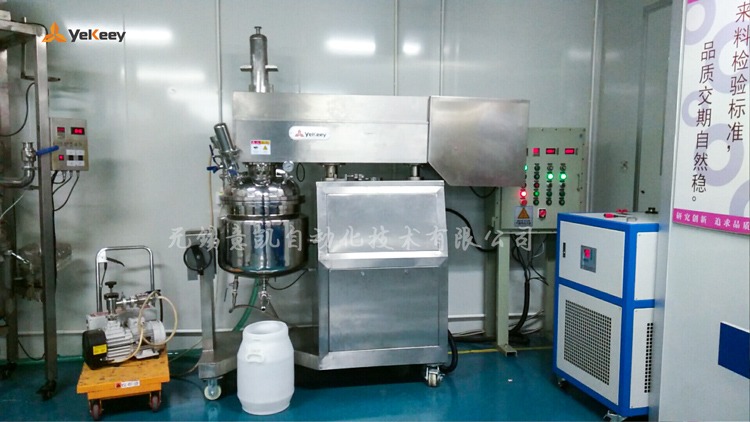A vacuum emulsifier is a comprehensive reaction production process, such a machine is mainly composed of machine parts, such as the main pot, pretreatment pot, electrical control, vacuum pump hydraulic, and other mechanical components. The complete set of emulsifier equipment is generally integrated multi-functional mixing equipment, including creams, sauces, ointments, and other industrial products in the mixing process of all functions, including cooling functions. The cooling function of the vacuum emulsifier can reduce the material in the emulsification tank to the temperature required by the process, it is accompanied by a cooling function, so how does the vacuum emulsifier cool?
The cooling methods of vacuum emulsification machines are generally divided into two ways:
1. The conventional method is cooled by the cooling water of the mixing tank jacket
The temperature control system of the vacuum homogenizing emulsion mixer is composed of a temperature sensor, a heating, and cooling medium layer, and a thermal insulation layer. It is also known as a water bath or oil bath type heating and cooling. The temperature can be quickly and conveniently controlled by the temperature control system, such as heating and cooling time, real-time display of temperature in the tank, etc. The water bath cooling method of the vacuum emulsifier generally uses tap water as the cooling water source (users with conditions can use chilled water to cool better).
Open the inlet and outlet valves, and master the opening and closing degrees of the inlet and outlet valves to control the cooling water flow and achieve the control of cooling speed. This conventional jacket cooling method is suitable for the emulsification of most products. This cooling method does not require external cooling equipment and is economical and practical.
2. Vacuum emulsifier external chiller cooling
When the cooling requirements of the emulsion stirring production process are higher, and the conventional jacket cooling method cannot meet the needs of low temperature and time of cooling, external cooling equipment is required. The chiller commonly used in vacuum emulsifiers is to produce cold capacity through the compressor refrigeration system and then transport the cold water to the cooling jacket of the equipment through the refrigeration pump to achieve refrigeration and cooling. The reasonable use of special emulsifier chiller equipment can effectively solve the production cooling problem of emulsifiers, and improve the service life of the equipment and material output.
After emulsification by a high-shear emulsifier, the emulsification system is cooled to near room temperature. The discharge temperature depends on the softening temperature of the emulsification system, and it should generally be able to flow out of the emulsifier with its own gravity. Of course, it can also be pumped out or pressurized with pressurized air. The cooling rate, shear stress during cooling, end temperature, etc. have an impact on the particle size and distribution of the emulsifier system, and the optimal conditions must be selected according to different emulsification systems. This is especially important when switching from laboratory trials to large-scale industrial production.
Welcome Consultation Orders
If you also have cooling requirements in emulsification production, please contact YeKeey for a consultation! More than 20 years of industry experience and strong technical strength enable us to provide you with more economical and efficient emulsifying machine cooling solutions, helping to save energy and increase efficiency to obtain high-quality products.






